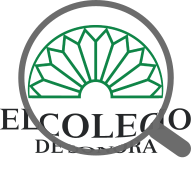Institutional and Social Asymmetries in Groundwater Management for Agriculture on the United States-Mexico Border
No Thumbnail Available
Date
2021-06-03
Authors
Córdova Bojórquez, Gustavo
Journal Title
Journal ISSN
Volume Title
Publisher
El Colegio de Sonora
Abstract
Objective: to present an approach to the prevailing institutional and social asymmetries in the management of groundwater of a transboundary aquifer and to explore the alternatives to not depend on the use of surface and treated wastewater from urban centers for local agriculture. Methodology: an approach and documentary study was carried out with actors from different social sectors. Results: social, economic and productive organization asymmetries complicate the establishment of a transboundary groundwater management model. Limitations: the limited availability of information on the aquifer and the productive system on both sides made it necessary to depend on the opinions of the interviewed stakeholders. Value: the comparison exercise as a method is very relevant for cross-border contexts. Conclusions: the community’s social actors do not know about; neither have interest in changing their traditional production system for a more sophisticated one that would give them the opportunity to get rid of the backwardness in which they are. The strategies and regulations are not firmly grasped on each side of the border, much less on a binational strategy despite the scarcity of the resource.
Objetivo: presentar un acercamiento a las asimetrías institucionales y sociales imperantes en el manejo del agua subterránea de un acuífero transfronterizo y explorar las alternativas para no depender del uso de agua superficial y residual tratada de los centros urbanos para la agricultura local. Metodología: se realizó un estudio documental y de acercamiento con actores de diferentes sectores sociales. Resultados: las asimetrías sociales, económicas y de organización productiva dificultan el establecimiento de un modelo de manejo de agua subterránea transfronterizo. Limitaciones: la poca disponibilidad de información del acuífero y del sistema productivo en ambos lados obligó a depender de las opiniones de los actores entrevistados. Valor: el ejercicio de comparación como método es muy relevante para contextos transfronterizos. Conclusiones: los actores sociales de las comunidades del Valle de Juárez, Chihuahua y Valle Bajo de El Paso, Texas, no conocen ni les interesa un cambio en su sistema productivo tradicional por uno más moderno que les daría la oportunidad de salir del atraso en el que se encuentran. Las estrategias y las regulaciones binacionales no están bien cimentadas en cada lado de la frontera, a pesar de la escasez del recurso.
Objetivo: presentar un acercamiento a las asimetrías institucionales y sociales imperantes en el manejo del agua subterránea de un acuífero transfronterizo y explorar las alternativas para no depender del uso de agua superficial y residual tratada de los centros urbanos para la agricultura local. Metodología: se realizó un estudio documental y de acercamiento con actores de diferentes sectores sociales. Resultados: las asimetrías sociales, económicas y de organización productiva dificultan el establecimiento de un modelo de manejo de agua subterránea transfronterizo. Limitaciones: la poca disponibilidad de información del acuífero y del sistema productivo en ambos lados obligó a depender de las opiniones de los actores entrevistados. Valor: el ejercicio de comparación como método es muy relevante para contextos transfronterizos. Conclusiones: los actores sociales de las comunidades del Valle de Juárez, Chihuahua y Valle Bajo de El Paso, Texas, no conocen ni les interesa un cambio en su sistema productivo tradicional por uno más moderno que les daría la oportunidad de salir del atraso en el que se encuentran. Las estrategias y las regulaciones binacionales no están bien cimentadas en cada lado de la frontera, a pesar de la escasez del recurso.
Description
Objective: to present an approach to the prevailing institutional and social asymmetries in the management of groundwater of a transboundary aquifer and to explore the alternatives to not depend on the use of surface and treated wastewater from urban centers for local agriculture. Methodology: an approach and documentary study was carried out with actors from different social sectors. Results: social, economic and productive organization asymmetries complicate the establishment of a transboundary groundwater management model. Limitations: the limited availability of information on the aquifer and the productive system on both sides made it necessary to depend on the opinions of the interviewed stakeholders. Value: the comparison exercise as a method is very relevant for cross-border contexts. Conclusions: the community’s social actors do not know about; neither have interest in changing their traditional production system for a more sophisticated one that would give them the opportunity to get rid of the backwardness in which they are. The strategies and regulations are not firmly grasped on each side of the border, much less on a binational strategy despite the scarcity of the resource.
Objetivo: presentar un acercamiento a las asimetrías institucionales y sociales imperantes en el manejo del agua subterránea de un acuífero transfronterizo y explorar las alternativas para no depender del uso de agua superficial y residual tratada de los centros urbanos para la agricultura local. Metodología: se realizó un estudio documental y de acercamiento con actores de diferentes sectores sociales. Resultados: las asimetrías sociales, económicas y de organización productiva dificultan el establecimiento de un modelo de manejo de agua subterránea transfronterizo. Limitaciones: la poca disponibilidad de información del acuífero y del sistema productivo en ambos lados obligó a depender de las opiniones de los actores entrevistados. Valor: el ejercicio de comparación como método es muy relevante para contextos transfronterizos. Conclusiones: los actores sociales de las comunidades del Valle de Juárez, Chihuahua y Valle Bajo de El Paso, Texas, no conocen ni les interesa un cambio en su sistema productivo tradicional por uno más moderno que les daría la oportunidad de salir del atraso en el que se encuentran. Las estrategias y las regulaciones binacionales no están bien cimentadas en cada lado de la frontera, a pesar de la escasez del recurso.
Objetivo: presentar un acercamiento a las asimetrías institucionales y sociales imperantes en el manejo del agua subterránea de un acuífero transfronterizo y explorar las alternativas para no depender del uso de agua superficial y residual tratada de los centros urbanos para la agricultura local. Metodología: se realizó un estudio documental y de acercamiento con actores de diferentes sectores sociales. Resultados: las asimetrías sociales, económicas y de organización productiva dificultan el establecimiento de un modelo de manejo de agua subterránea transfronterizo. Limitaciones: la poca disponibilidad de información del acuífero y del sistema productivo en ambos lados obligó a depender de las opiniones de los actores entrevistados. Valor: el ejercicio de comparación como método es muy relevante para contextos transfronterizos. Conclusiones: los actores sociales de las comunidades del Valle de Juárez, Chihuahua y Valle Bajo de El Paso, Texas, no conocen ni les interesa un cambio en su sistema productivo tradicional por uno más moderno que les daría la oportunidad de salir del atraso en el que se encuentran. Las estrategias y las regulaciones binacionales no están bien cimentadas en cada lado de la frontera, a pesar de la escasez del recurso.
Keywords
Ciencias Sociales, Institutional asymmetry, Transboundary aquifer, Drought, Protected agriculture, Asimetría institucional, Acuífero transfronterizo, Sequía, Agricultura protegida




